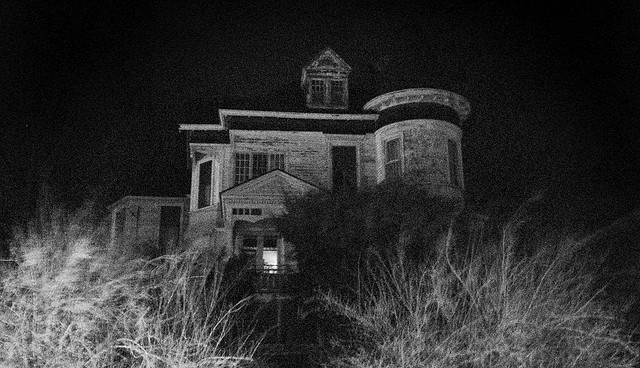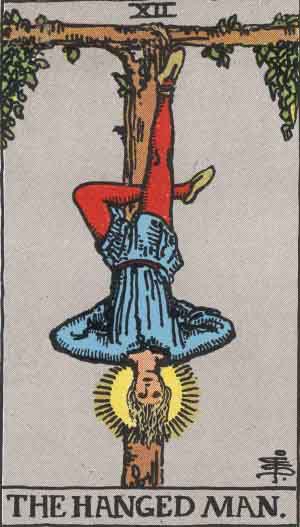 J.K. Rowling begins [amazon_link id=”059035342X” target=”_blank” ]Harry Potter and the Sorcerer’s Stone[/amazon_link], [amazon_link id=”0439139600″ target=”_blank” ]Harry Potter And The Goblet Of Fire[/amazon_link], [amazon_link id=”0439785960″ target=”_blank” ]Harry Potter and the Half-Blood Prince[/amazon_link], and [amazon_link id=”0545139708″ target=”_blank” ]Harry Potter and the Deathly Hallows[/amazon_link] with an outside point of view. In the case of the first book, some exposition is necessary to properly set the stage for the rest of the book. In the case of the other books, Harry is not present for some essential information. I have noticed some folks make rather a big deal of this deviation from Harry’s point of of view, but really, by the end of the series, Rowling employed this alternate POV beginning more often than she didn’t.
J.K. Rowling begins [amazon_link id=”059035342X” target=”_blank” ]Harry Potter and the Sorcerer’s Stone[/amazon_link], [amazon_link id=”0439139600″ target=”_blank” ]Harry Potter And The Goblet Of Fire[/amazon_link], [amazon_link id=”0439785960″ target=”_blank” ]Harry Potter and the Half-Blood Prince[/amazon_link], and [amazon_link id=”0545139708″ target=”_blank” ]Harry Potter and the Deathly Hallows[/amazon_link] with an outside point of view. In the case of the first book, some exposition is necessary to properly set the stage for the rest of the book. In the case of the other books, Harry is not present for some essential information. I have noticed some folks make rather a big deal of this deviation from Harry’s point of of view, but really, by the end of the series, Rowling employed this alternate POV beginning more often than she didn’t.
The events of Goblet of Fire take place a matter of nine weeks after the end of Prisoner of Azkaban. According to the Harry Potter Lexicon, whom you can usually trust to be quite thorough about these sorts of things, Harry and Co. return to London on the Hogwarts Express on June 18. Pettigrew escapes about June 9. The action of Goblet of Fire picks up again on August 23, when Voldemort murders Frank Bryce, which wakes Harry up with a prickling scar. It sure didn’t take Peter Pettigrew very long to find Voldemort in Albania, did it? He has already been with Voldemort for a few weeks when the events of the novel begin, so let’s say that he has been with Voldemort only three weeks. That would possibly give them enough time to accomplish killing Bertha Jorkins and to return to Britain. That would mean that Pettigrew found Voldemort some time around the beginning of August at the latest. Just kind of interesting to think about in terms of timing.
 I always kind of liked that opening chapter. It’s so creepy. I love the description of the Riddle House and the gossipy pub, known as the Hanged Man. The Hanged Man is in the Tarot deck. In his Pictorial Key to the Tarot, A.E. Waite said of this card
I always kind of liked that opening chapter. It’s so creepy. I love the description of the Riddle House and the gossipy pub, known as the Hanged Man. The Hanged Man is in the Tarot deck. In his Pictorial Key to the Tarot, A.E. Waite said of this card
The gallows from which he is suspended forms a Tau cross, while the figure—from the position of the legs—forms a fylfot cross. There is a nimbus about the head of the seeming martyr. It should be noted (1) that the tree of sacrifice is living wood, with leaves thereon; (2) that the face expresses deep entrancement, not suffering; (3) that the figure, as a whole, suggests life in suspension, but life and not death. […] It has been called falsely a card of martyrdom, a card a of prudence, a card of the Great Work, a card of duty […] I will say very simply on my own part that it expresses the relation, in one of its aspects, between the Divine and the Universe.
He who can understand that the story of his higher nature is imbedded in this symbolism will receive intimations concerning a great awakening that is possible, and will know that after the sacred Mystery of Death there is a glorious Mystery of Resurrection.
So that’s kind of interesting to think about. Another thing to think about is Frank Bryce. He is described as a war veteran, and at first glance, one assumes World War II. However, if you think about it, it’s not so clear. Frank has been working for the Riddles ever since he returned from the war, whichever war it was, which implies some time, right? Using the descriptor “ever since” the war implies it has been some time, at any rate. However, we know that the events of Goblet of Fire take place in 1994. The murder of the Riddle family happened 50 years earlier, according to the description in the book, so around 1944 or 1945. If Frank had been a World War II veteran, then he hadn’t been working very long at the Riddles’ house when they were murdered. The only way this works is if Frank was wounded earlier in the war, which in Britain, took place from 1939-1945. I think Frank is probably intended to be a World War II veteran because he is too young to be a World War I veteran, but it’s confusingly written. Rowling has repeatedly said that math is not her strong suit, and when people try to pin down events like this, it is clear.
When the Riddles are found, their cook Dot tells everyone that “Nobody forced the door last night! No broken windows!” Everyone assumes that the person who killed the Riddles must have had a key and access to the house. Around 50 years later when Frank goes over to the house to check out the light he sees, he notices that the “front door of the Riddle House bore no sign of being forced, and nor did any of the windows.” It is interesting that Frank doesn’t immediately suspect something is wrong and hightail it home because last time that happened, he was accused of murder.
I really think Rowling is great with exposition. We need to know Voldemort’s plans, and Frank Bryce overhearing Voldemort and Wormtail plot is a brilliant device for sharing them. Dumbledore appears to have been right about Pettigrew, as one of the first things he tries to do is convince Voldemort not to use Harry Potter to return to his body. When Frank is discovered and killed, surely his body is just left in the house, and one has to wonder what the gossip in Little Hangleton was like when Frank Bryce was found in the exact same condition as the Riddles. Of course, he wasn’t sitting at the dinner table, so the authorities may have been more likely to attribute his death to a heart attack or something else. Still, an autopsy should prove otherwise, right?
Chapter 2, “The Scar,” represents the last time in the series when Rowling backtracks and fills in information for readers who might not have read the earlier books. Harry is thinking about how hard it was to return to the Dursleys knowing he very nearly had been able to move in with Sirius. I wonder if Dumbledore would have allowed it, though. Remember that Harry is protected through his familial bond with Petunia.
There is yet another fine example of exposition when Harry writes to Sirius and mentions Dudley’s diet is going poorly.
In Chapter 3, “The Invitation,” Harry is invited to the Quidditch World Cup with the Weasleys, and there is a funny scene when Uncle Vernon retrieves a letter covered in stamps from the postman. Mrs. Weasley’s postscript says, “I do hope we’ve put enough stamps on.” When Harry sees the envelope, completely covered in stamps, he snarkily replies to Vernon, “She did put enough stamps on, then.” Harry in the books is much funnier than movie Harry.
In Chapter 4, “Back to the Burrow,” the Weasleys bust up the Dursleys’ fireplace. I have to admit I can see things from the Dursleys’ point of view in this chapter. I mean, first they demolish my house, then they leave stray bit of candy behind that engorges my son’s tongue. I would think they were mad and dangerous, too. I kind of wonder how Ton Tongue Toffees work. Arthur Weasley says he thinks it is an Engorgement Charm, but it could be a Swelling Solution, too. I wonder how they did in Potions class. I can’t picture Snape liking them very much, but you can’t deny they have learned a few things.
In Chapter 5, “Weasleys’ Wizard Wheezes,” Harry finds out that Fred and George want to start a joke shop and have been creating products and order forms. We also get to meet Charlie and Bill for the first time. I like both of the elder Weasley brothers. I kind of wish Charlie hadn’t been deleted from the films. I realize his part’s minor, but still.
Ludo Bagman is first mentioned in this chapter, too. Arthur Weasley says that he is responsible for the Weasleys’ World Cup tickets. His name is interesting. Ludo means “I play” in Latin. A bagman is “an agent who collects or distributes the proceeds of illicit activities.” So his name basically means, “I gamble illegally”! Old Ludo has been derelict in searching for Bertha Jorkins. Wonder why he shows so little interest? Barty Crouch is sure interested. Of course, that’s likely because of the memory charm he’s placed on her. He would want to keep tabs on her.
Image via Christine